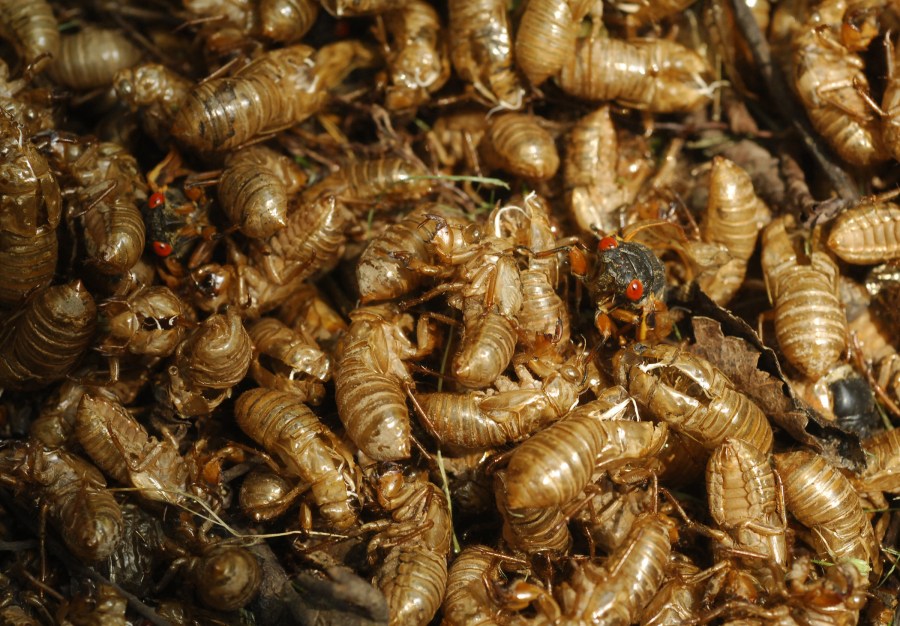
Cicadas’ buzzing and clicking sounds can be amplified by the sudden emergence of millions of the insects into an overpowering din. (photo by Anne Rayner)
Vanderbilt audiologist measures sound of Music City's 'Loudest Voices'
It is a sound Middle Tennesseans cannot miss. The high-pitched drone of the recently emerged cicadas rings loud and clear – so loud in fact that one Vanderbilt hearing and speech scientist is using their deafening tone to educate people on hearing protection.
Todd Ricketts, Ph.D., associate professor at the Vanderbilt Bill Wilkerson Center for Otolaryngology and Communication Sciences, measured the sound level of the cicadas at peaks of 85-88 decibels outside of Vanderbilt University Medical Center on Tuesday, May 24.
These levels are just higher than shouting and comparable to a motorcycle or subway at 25 feet. Stand too close for too long, and these very vocal insects could damage your hearing, Ricketts explained.
“At the current levels, we would recommend ear protection if someone were going to be outside for four hours or more,” Rickets said.
The Occupational Safety and Health Administration (OSHA) recommends wearing ear protection for consistent levels of 85 decibels or higher.
Although Ricketts specializes in hearing aids and cochlear implants, it’s the cicadas’ pulsating whine that most people want to discuss with him lately.
“I like to use cicadas to talk about sound levels and encourage people to protect their ears,” Ricketts said. “It’s a good opportunity to remind people of hearing safety in all circumstances, be it with iPods or concerts, or even the cicada.”
Cicadas appear in 13- or 17-year cycles and are best known for their buzzing and clicking sounds. The cicadas currently present in Middle Tennessee are known as Brood XIX and were last seen in this area in May, 1998.













